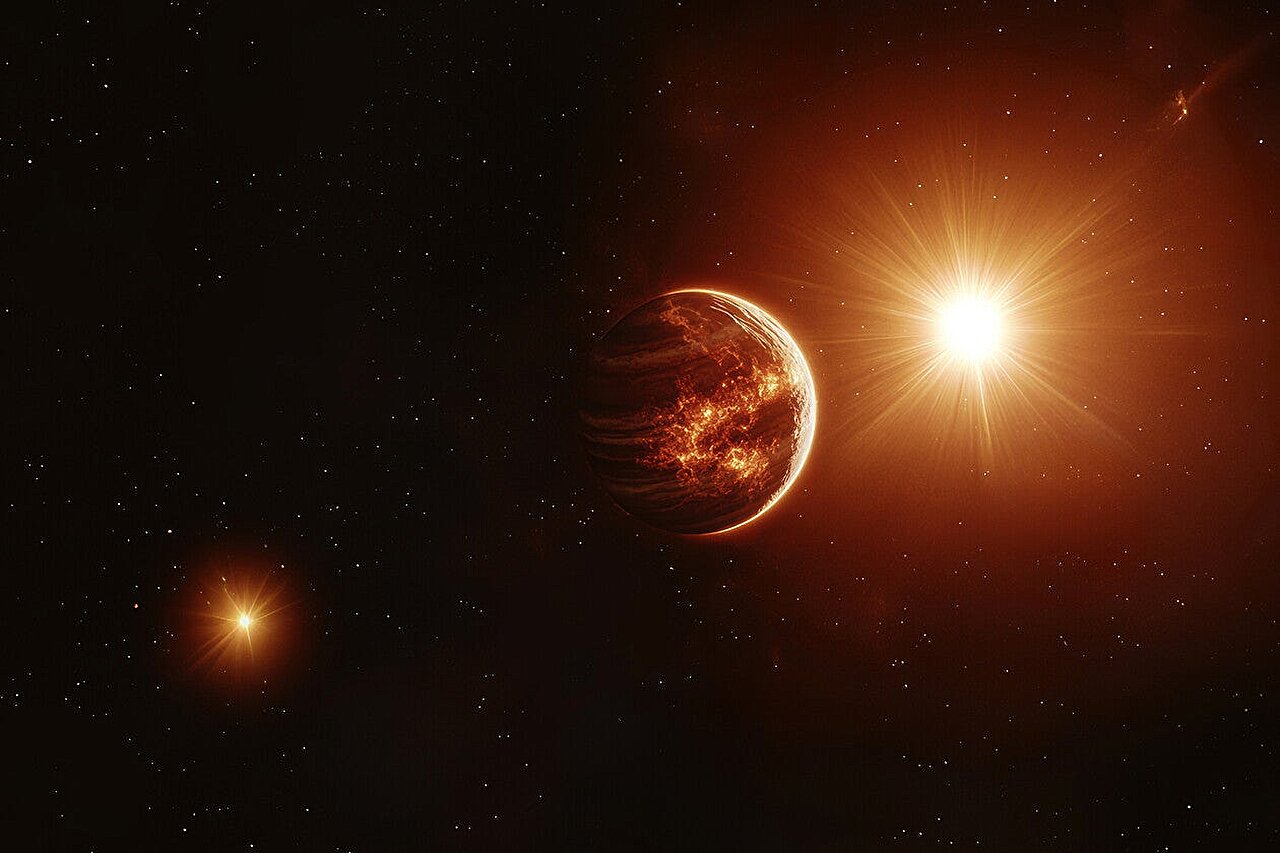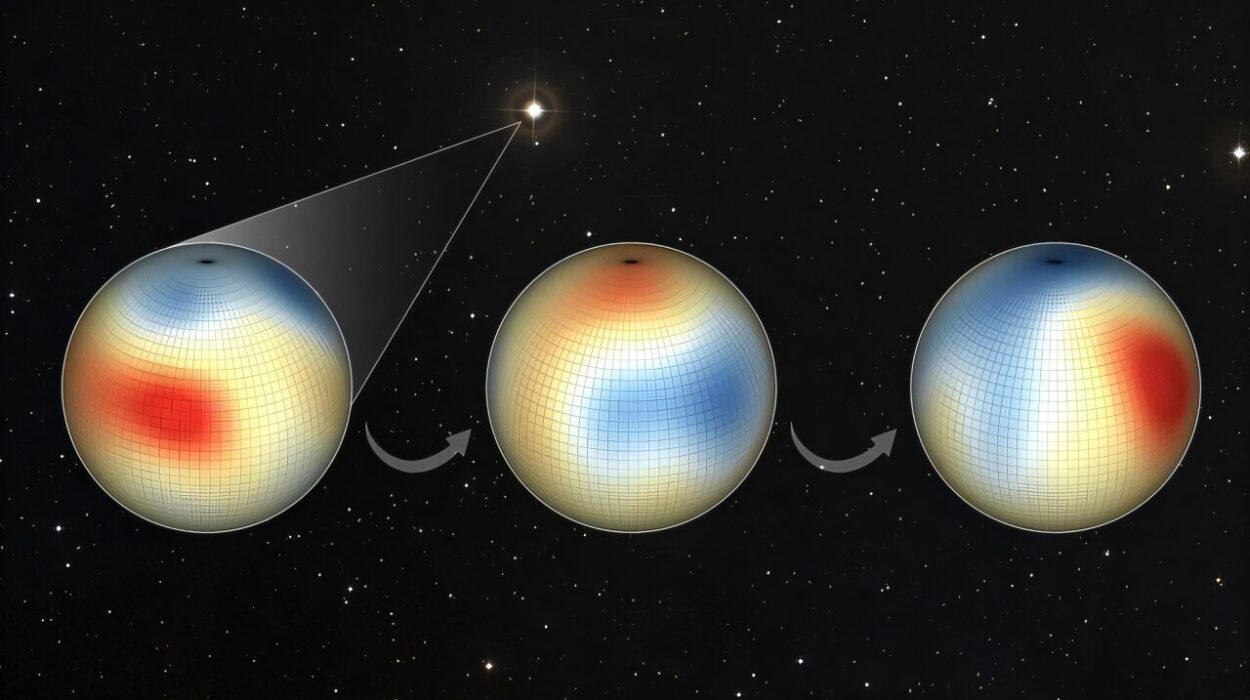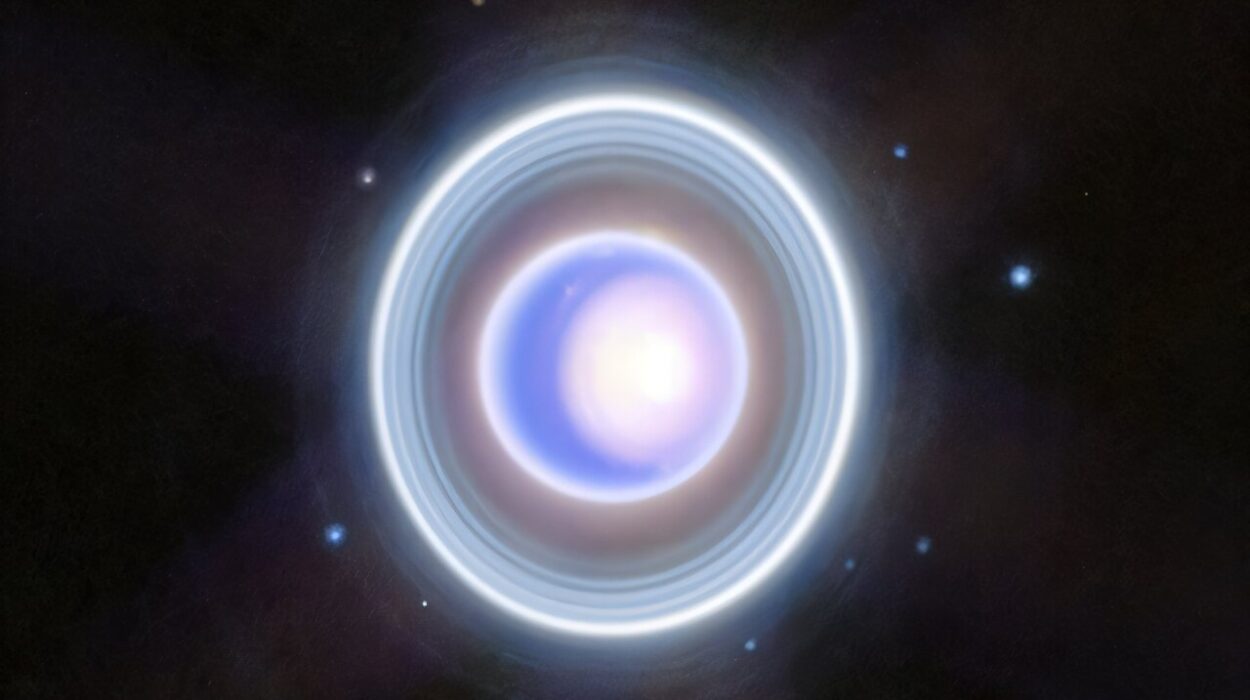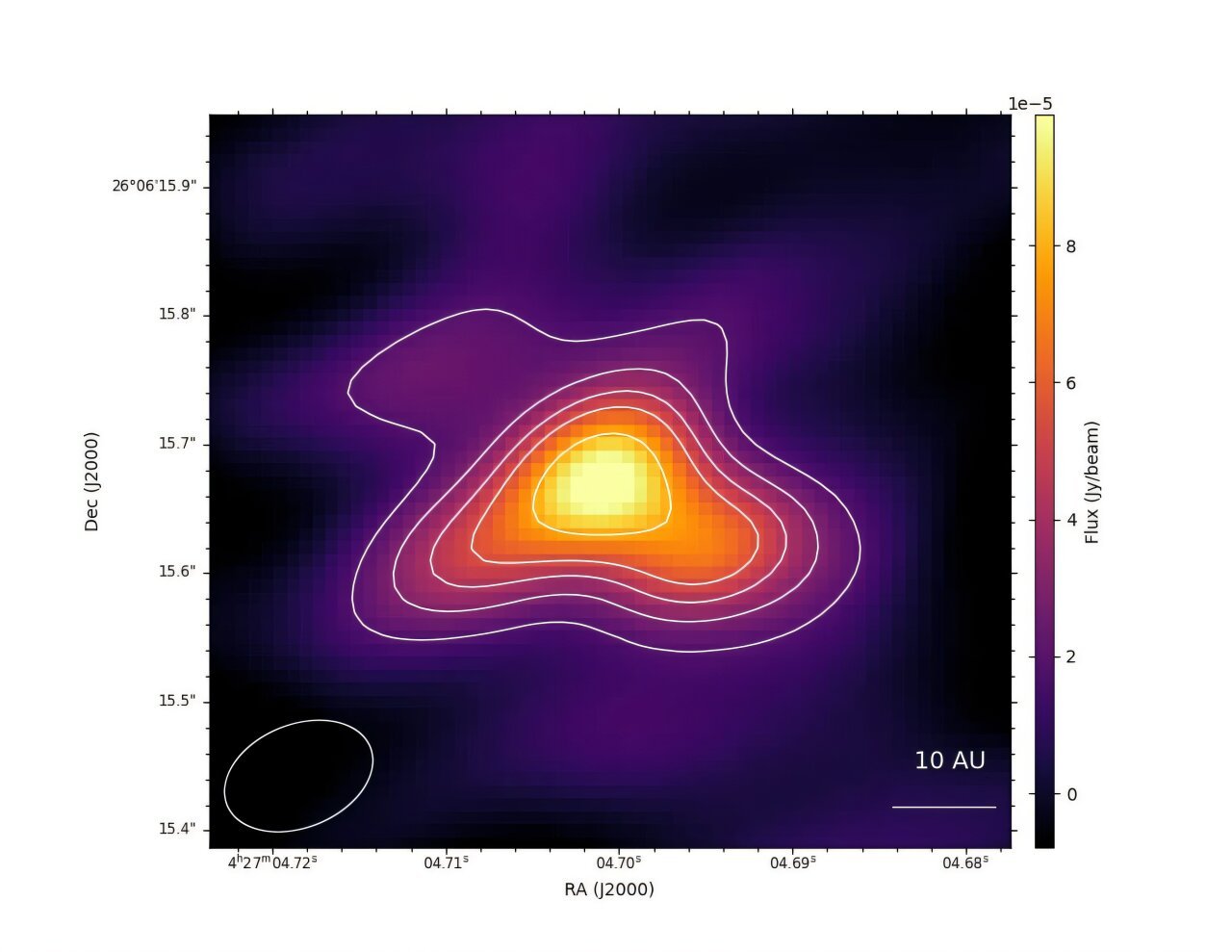In the vast, glittering canvas of the cosmos, some worlds dare to dance a little closer to the flame. These are the hot Jupiters—colossal gas giants that swirl scorchingly near their stars, completing blistering orbits in mere days, sometimes even hours. They are rare, strange, and seemingly impossible—cosmic renegades in a universe that usually tucks its giants safely away in the cold outskirts of their systems.
But now, astronomers at Yale University believe they’ve cracked a deeper mystery: not just how these sizzling giants come to be, but how two of them can form side by side, each orbiting a different star in a binary stellar system. Their findings, recently published in The Astrophysical Journal, could rewrite what we know about planetary migration—and offer a cosmic roadmap for discovering more of these exotic twin worlds.
A Tale of Two Suns and Two Giants
For decades, scientists have pondered the enigma of hot Jupiters. First discovered in 1995 with the landmark detection of 51 Pegasi b, they defied expectations. According to classic theories, gas giants like Jupiter form far from their host stars, in cool, calm orbits where ice and gas can gradually accumulate. And yet, hot Jupiters burn fiercely just a few million miles from their stars—closer than Mercury is to our Sun.
The latest twist in this interstellar tale involves not just one of these searing giants—but two, nestled within binary star systems, where two stars orbit each other in a gravitational pas de deux. Each star, in these rare cases, appears to cradle its own hot Jupiter.
Enter Malena Rice, assistant professor of astronomy at Yale, who led the team of researchers unspooling the mystery behind this celestial symmetry. Their study demonstrates that the normal gravitational evolution of binary star systems, over billions of years, can lead to mirrored migrations, where both stars independently shepherd a gas giant into a tight, scorching orbit.
“The ZLK mechanism is a dance of sorts,” said Rice, referring to the von Zeipel-Lidov-Kozai effect, a gravitational phenomenon with a name as complex as the orbits it shapes. “In a binary system, the extra star can shape and warp planets’ orbits, causing the planets to migrate inward.”
Gravity’s Invisible Choreography
Imagine a planet forming in the quiet outskirts of a young star system. Over time, another star, its distant but gravitationally relevant neighbor, begins to tug at the planet’s orbit—gently, rhythmically, but persistently. This is the essence of ZLK migration, a cosmic choreography in which the orbit of a planet becomes increasingly stretched and tilted, until gravity flings it into a new path—closer to its parent star.
For one hot Jupiter, this might be strange enough. But in a binary system, the team showed that both stars can independently conduct this gravitational dance, each guiding a massive planet inward.
“We show how planets in binary systems can undergo a mirrored migration process,” Rice said. “So that both stars end up with hot Jupiters.”
To test this idea, the Yale team turned to powerful numerical simulations. Led by Yurou Liu, a rising senior at Yale College and the study’s first author, the team recreated the slow evolution of these systems over billions of years—a timescale no telescope could ever capture in real time.
“With the right code and enough computing power,” Liu said, “we can explore how planets evolve over billions of years—movements that no human could watch in a lifetime, but that still could leave imprints for us to observe.”
A Rarity in the Universe
Hot Jupiters are already rare, orbiting only about 1% of sun-like stars. Double hot Jupiters? Even rarer. Yet, the researchers believe the mechanism they uncovered offers a plausible and natural pathway for their creation. And perhaps more importantly, they believe it gives astronomers a map for where to look next.
“We came up with a prediction,” said Tiger Lu, a recent Yale Ph.D. graduate and co-author of the study. “If you’re looking for systems with double hot Jupiters, search among known hot Jupiters that already live in star systems with a second star nearby.”
Their mechanism works best, Lu explained, when the two stars in the binary system are moderately spaced—not too close to merge their planetary nurseries, and not so far apart that they never feel each other’s gravitational pull.
“They need to be far enough apart that giant planets are still expected to form around each star,” Lu said, “but close enough together for the two stars to influence each other during the system lifetime.”
Why Hot Jupiters Matter
It might be tempting to think of hot Jupiters as exotic outliers—curious, but not especially consequential. But to astronomers, they are gold mines of insight. These planets defy conventional models, challenge our assumptions about planetary formation, and reveal how dynamic and diverse solar systems can be.
“We would expect giant planets to form far away from their host stars,” Liu said. “This makes hot Jupiters both accessible and mysterious—and a worthwhile subject to study.”
Their tight orbits and sheer size make hot Jupiters easier to detect than Earth-like planets, and their extreme environments provide a natural laboratory for studying atmospheric chemistry, tidal forces, and orbital evolution.
Moreover, understanding how they form, migrate, and survive in binary systems offers a new window into how planetary systems evolve—including our own.
Looking Ahead: The Search for Celestial Twins
The findings open the door to a tantalizing possibility: that dozens more double hot Jupiter systems may already be hiding in plain sight. Astronomers know of many hot Jupiters in binary systems—but few have looked closely at whether the second star might harbor a hidden giant of its own.
With the rise of next-generation telescopes, including NASA’s James Webb Space Telescope and the upcoming Nancy Grace Roman Space Telescope, astronomers will soon have the tools to probe these systems with unprecedented detail.
The researchers hope their work will inspire new searches—targeted surveys of hot Jupiters in binary systems, guided by the gravitational blueprint revealed in their study.
A Celestial Waltz, Billions of Years in the Making
As the stars above continue their silent dance, the planets that orbit them follow intricate, invisible steps. Some sway gently, while others are flung inward, wrapped in tidal heat, glowing like coals beside the hearth of their sun.
Thanks to the work of Yale astronomers, we now understand a little better how some of those cosmic dances begin—and where we might find their hidden partners.
In the words of Malena Rice: “This is just one more piece of the puzzle of how diverse, beautiful, and surprising planetary systems can be.”
And in a universe of a hundred billion stars, that dance is just beginning.
Reference: Yurou Liu et al, The Formation of Double Hot Jupiter Systems through von Zeipel–Lidov–Kozai Migration, The Astrophysical Journal (2025). DOI: 10.3847/1538-4357/add405






